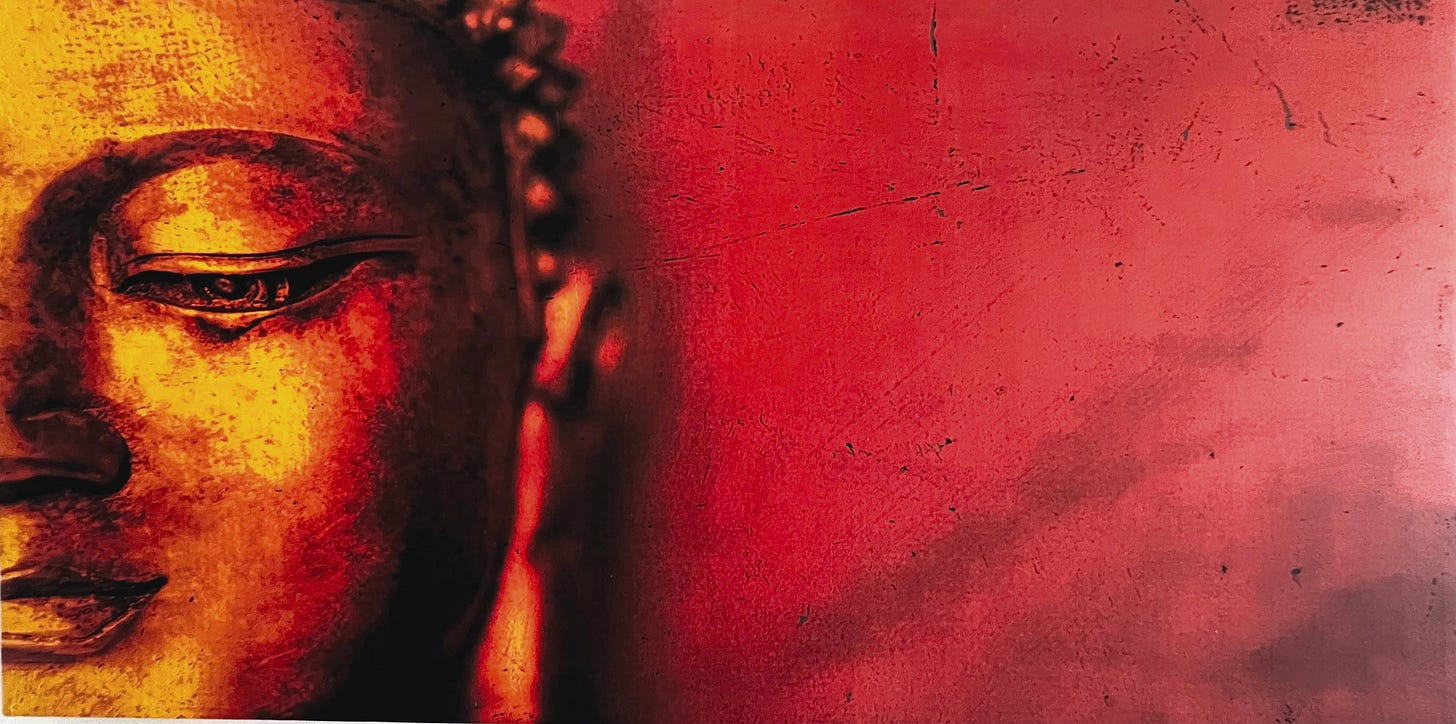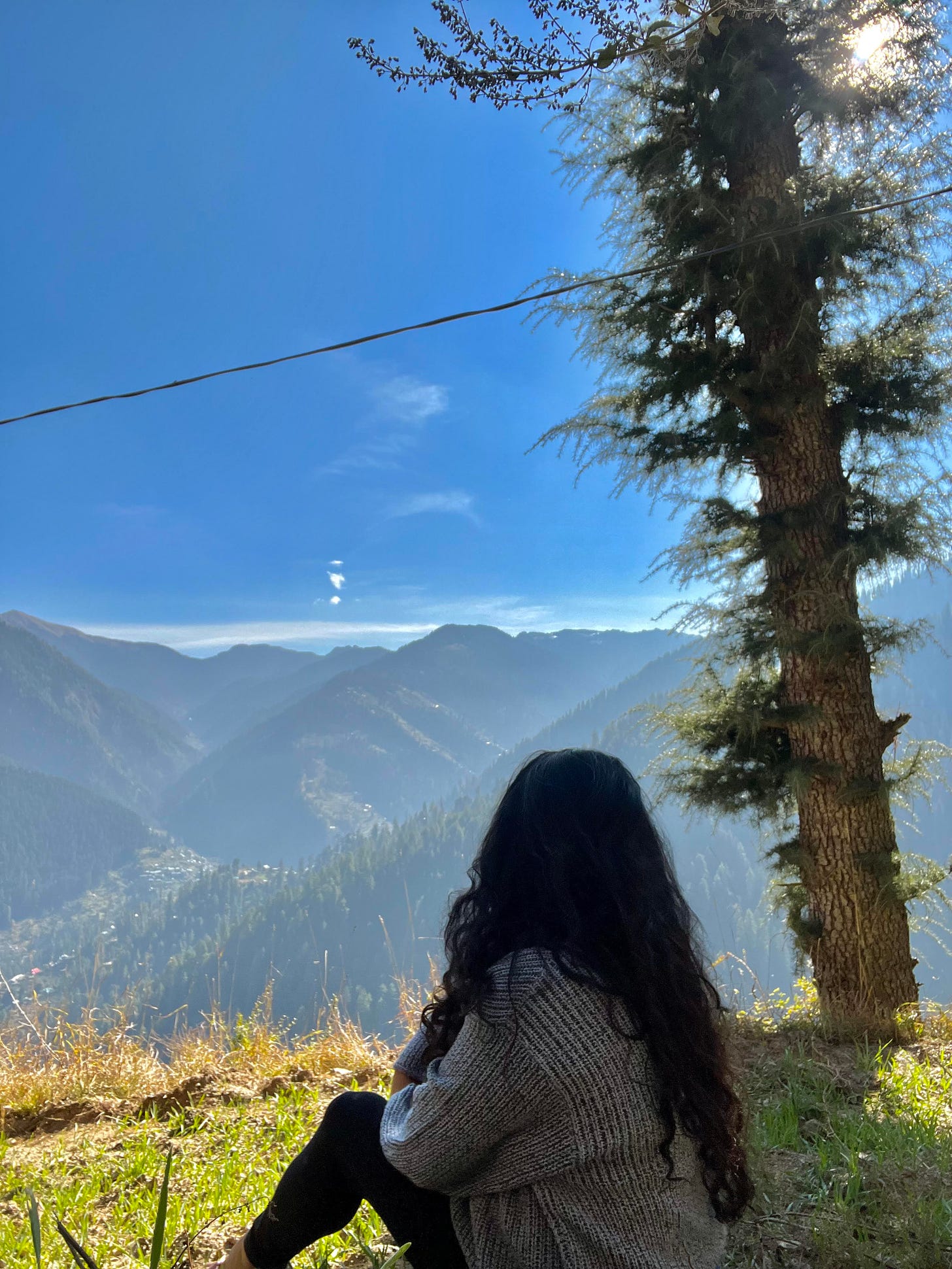Learning to take refuge
Lessons from before and after a 10-Day Retreat of Silence
Meditation was an ‘outer-worldly’ concept for me, until a few years ago. Although I was intrigued by it, I often thought it was yet another activity to escape the worries of the regular world and not deal with them. I felt it was fictional, almost with a hint of condescension. a.k.a. the righteous mind, the doubting mind, the judging mind that ironically holds all self-beliefs as true. I was far away from understanding the true benefits of meditation.
I had long heard of a meditation retreat called Vipassana often called as the silent meditation (believed to have been rediscovered in India by Gautam-the Buddha, 2500 years ago). Given the many ideas I had then, about how life should or should not be and coming out of a tumultuous personal journey, I gravitated to enroll for my first Vipassana retreat in Jan 2021. With no external pressure, but to simply put, the pain of personal ignorance was too much to not do anything about it. Distorted views, preconditioned beliefs formed the basis of how I navigated through the world. Even if I felt my intentions then were ‘right’, my expectations were ‘right’, the world around me seemed rather different from my righteous views. a.k.a. the controlling-righteous mind, likes to form a secure playbook to feel safe. How it suffers when it isn’t able to control?
This was quite dissonating, not to mention, difficult to deal with. Hence, I was hoping to find some sort of refuge through a new practice; to meet life with a new pair of eyes.
10 days in absolute silence, with no access to phones seemed a little daunting at first but I felt it was doable. I was curious. In my heart, I felt more ready with a fresh learner’s mind, committed to not leaving the course midway. It was also deeply encouraging to see a group of first timers who were probably as clueless, yet curious and committed to stay for the next 10 days.
We had to hand over our mobile phones, electronic devices, any reading or writing material (including pen, books of personal faith or religion), stay with utmost modesty, like Bhikshus with gratitude for everything that we received out of goodwill of others, including food and shelter for next 10 days. We gave up all concepts of ownership, at least for the next few days. We were introduced to the concept of maintaining ‘Noble Silence’ and undertake 5 precepts for the next 10 days.
-Refrain from taking lives (not even a tiny insect or mosquito)
-Refrain from taking what is not given / not stealing
-Refrain from sexual misconduct
-Refrain from wrong speech through Noble Silence
-Refrain from intoxicants that cloud the mind.
(and 3 more added for old students: refrain from eating after noon, refrain from using objects of personal adornments, refrain from luxurious beds/seats) for the next 10 days.
These rules were extremely conducive for one to create a more harmonious state of mind, for the meditation practice. If our minds were continuously engaged in restless activity, we may not have understood the practice, let alone derive its benefits.
On the first day of the retreat, the gong struck gently at 4am. We walked to the meditation hall and practiced Anapana- Simply watching the breath. Observing the nature of breath as it passed through the nostrils. To a logical, reasoning mind this may seem unassuming. A.k.a mind has a tendency to instantly form opinions basis what it already knows. This is even before truly investigating all possibilities. It is simply a conditioned survival method, built over time.
The body and mind were now being prepped for a new schedule of meditating for about 10 or more hours each day, for the next 10 days.
I could witness that the mind was curious, wanting to grasp end results not to mention, I had a lot of questions.
“Would I have to keep watching my breath for 10 days? This is so boring. Why do I even need to do this? How would this non-complex process of ‘watching the breath’ even help with my struggles in real life? What if I don’t like this practice?” There was no end to the conjectures. However, this is a normal part of the process. It was simply reactions to unfamiliarity. After few seconds my mind had started to spin a network of stories, almost like a lucid dream. Drawing memory after memory, good and bad. The term monkey mind could not be an anomaly for sure.
If resistance is the only way mind has dealt with change, this was simply a method to release the old habit pattern; to learn a new way of easing into change. Sometimes the mind spun off in the web of memories, for several minutes, and the attention was then brought back to my breath, on its own. Slowly it learnt to trust itself, without any coercion.
I came to terms with the fragility of the thoughts and mind; nothing stayed fixed. It jumped from one thought to the next, one memory to the next, there was nothing personal about it. Repetitive thoughts were only a manifestation rooted in self-craving & aversion. I had been pirouetting between my own created preferences of likes and dislikes often wrestling my way through life, by trying to control its experiences.
Invariably, we end up creating a rigid sense of self-identity, centered only around self-preferences. And then we spend a great part of our life protecting this identity. This is both useful- during physical danger to protect oneself and very limiting - when used as a rulebook for life.
It was quite interesting to note that with a wee bit distance as an observer to mental activities, one if able to release identification from one’s own thoughts. A.k.a. the conscious mind, is starting to learn about its own behavior and patterns. We are not our thoughts. Knowing this may not be enough to change compulsive nature of the mind but a very positive start indeed.
The practice of watching the breath continued for the next 3 days. With slow persistent effort I witnessed the mind weaken its grip on compulsive thoughts. It had learnt to become quieter through its own right effort. Every time I was aware that the mind has spun to a distant reality, I gently brought it back to the breath, with conscious effort.
On the 4th day, we were introduced to the practice of Vipassana which means to see things as they are, not as they appear to be. This is more than just a play of words, but a deeper understanding of the workings of the mind. This is developed through the practice and self-investigation. One is almost not ready to learn Vipassana until practicing Anapana for at least 3 days, which brings the mind to much finer states.
Vipassana is the practice of internally scanning one’s own body through the sharpened mind and observing all sensations that arise within the body. One is slowly able to understand the impact of mind on matter(body) and vice-versa. The sensations on the body are mirror gateway to one’s mental state. The what’s, why’s and how’s are understood through continued practice of the technique.
In the seat of our own awareness we continued the practice, for several hours every day. Simply learning to be with oneself; watching the impact of everything that was created in our own body-mind; resisting the urge to escape or distract as one would otherwise in regular life. Everything was welcome; fear, judgement, pleasure, joy, sadness; all that arose and passed away in the frame of mind-body.
I saw myself unfold differently each day. Each day lighter than the other. Some days heavier too. But it was OK.
I had spent a larger part of my life trying to fix its outer arrangements to create a sense of eternal comfort. But for most parts it does not work. Vipassana was an opportunity for me to see the other side of the coin; What lay underneath such compulsive motives and where did my true work lie. It was one of the best gifts I gave myself in a very long time.
On day 10, we broke our noble silence and learnt the practice of ‘Metta’- Loving Kindness. Selflessly sharing the goodwill accumulated through our own self-investigation, for the benefit of others and ourselves. We could look the same we were 10 days ago (may be a few kilos lighter with eating just about enough to keep us alive, without indulgence) but we were not the same people. I could sense a lot had changed in how I perceived the world now.
We run around in this tiny world in tinted frames of our own conditioning; layered through our birth, families, social structures, being conditioned to believe what is ok & what is not.
Do we truly understand why we do things, the way we do? What does it mean to come to terms with some of our own unpleasant qualities and not judge or dislike ourselves for it? What if we learn a novel way to truly process these conditions not as self-limitations but staying present to them as they arise? What does it mean to find greater grounds of compassion in our own hearts, for our shortcomings and that of others?
What does it mean to live in a way where economic success underlined in greed, wasn’t the only way to live? How can our intentions refine day-to-day?
The insights may often take some time to crystallize into our daily lives. This is not simply a belief system that can be wielded for convenience and intellectualized. I could say, it is fundamental rewiring of the workings of our own mind, creating a much deeper understanding for the ways of life. We learn to take refuge in ourselves, breaking the need to be salvaged.
Meditation no longer felt like fiction.
Each one experiences Vipassana differently and the outcome of a single 10-day retreat is certainly not meant to uproot all our self-limiting conditions, but it is definitely a strong start in the right direction. It entails a moment-to-moment devotion. Although initially, Vipassana was a way to find solace outside of me (which ironically stemmed from an old behavior to escape reality and find comfort outside of oneself), it became quite the opposite over these years.
Vipassana is meant to show the light within us, and also our own darkness. These are simply brought to our conscious awareness yet supported by our own gentle strength to release them. Self-limiting behavior patterns start to wean. The refuge is not in the practice as a ritual, but within our Own selves. The practice if at all, is just an anchor. It is not to escape the trials of life but to come to terms with all that arises within the frame of our own body and mind, understand its changing nature with a much kinder and accepting heart, as a way to be truly happy in our day-day lives. One learns how not to resist the wave, but to ride with it.
Thank you, for reading this article. I wrote this almost a year ago but only found it appropriate to share it now, for the benefit of all. If this article or parts of it echo with you, please feel free to share it for the benefit of others. You may also like & save this article to reflect later.
Helpful links for Vipassana courses: Vipassana under S.N Goenka tradition






